Writers often struggle to create believable money systems that fit seamlessly into their stories. There are many types of fictional currency, from sci-fi credits like Republic Credits in Star Wars to fantasy coins such as Gold Crowns used across Westeros.
This blog will give you 13 unique ideas for made-up money, helping your readers feel truly immersed in your story’s economy and worldbuilding aspects. Keep reading to discover exciting options for designing currencies your audience won’t forget!
Key Takeaways
Fictional currencies help writers build immersive worlds, like Credits in “Star Wars” or Gold Dragons from George R.R. Martin’s Westeros.
Currency forms range widely—examples include digital tokens (Galactic Credits, Star Trek Latinum), precious goods (Spice Melange from Dune), magical items (Faerie Gold), and simple barter systems like horses or herbs among fantasy groups.
Unique money names add culture depth to stories; famous examples are Simoleons from “Who Framed Roger Rabbit,” Zenny in Mega Man games, Dragos used in “Star Frontiers,” Bells from Animal Crossing, and Rupees found in The Legend of Zelda series.
Popular sci-fi currencies often reflect real-world economics—for example: inflation affecting Galleon prices in Harry Potter—and new ideas inspired by cryptocurrencies such as Bitcoin show how digital money shapes modern storytelling.
Many successful fictional currencies borrow historical terms (Roman denarius-inspired coins) and natural resources (bottle caps currency after society collapses in Fallout).
Table of Contents
What is Fictional Currency?
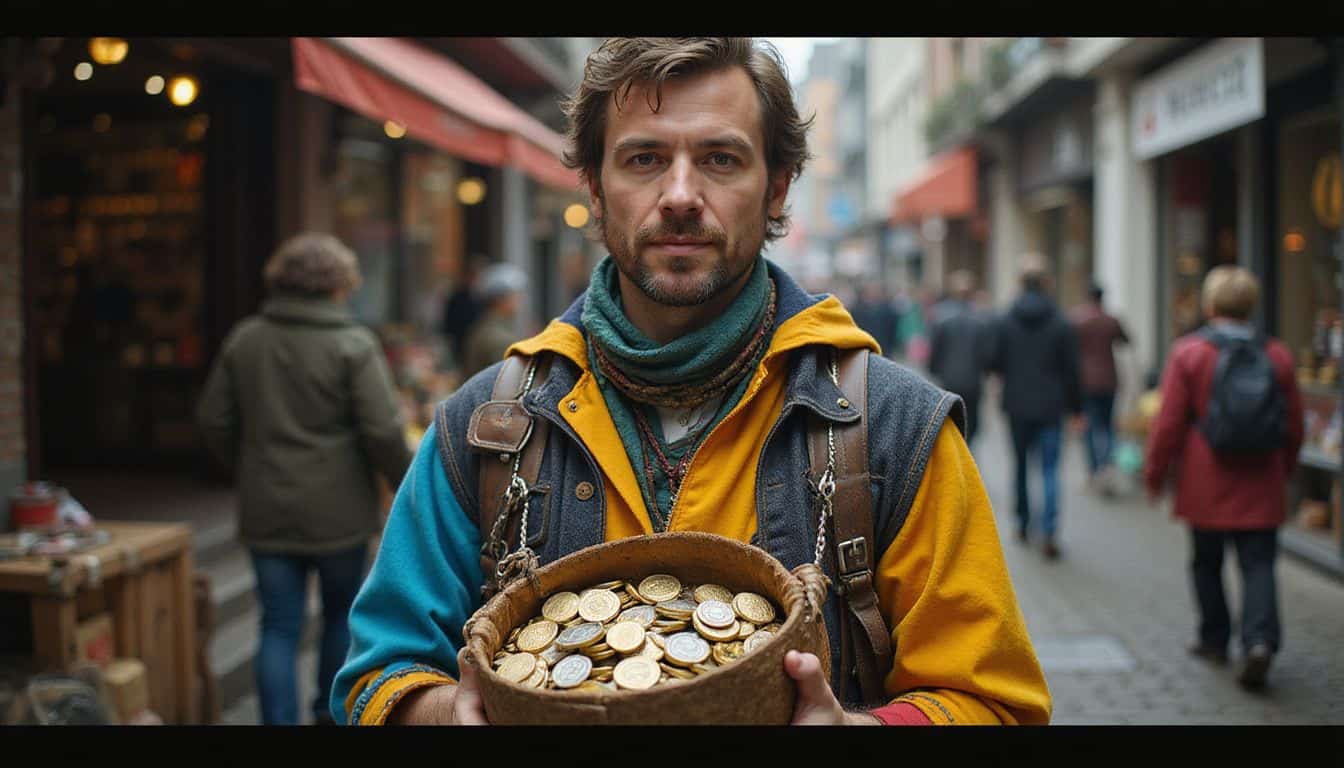
Fantasy and sci-fi worlds come alive through unique details like dragons or sandworms, but fictional currencies also play a big role. Fictional currency is imaginary money made up for novels, shows, movies, and games—such as Simoleons in “Sim City,” Dragos from the game “Soul Nomad & the World Eaters,” or even Credits used widely in sci-fi series like “Star Trek: Deep Space Nine” and “Babylon 5.” Many fictional monies use elements we already know from real-world coins, such as gold coins, sterling pounds from Britain, or rupees adapted into new fantasy forms.
Even modern sweepstakes casinos use their own fictional currencies; you can learn more here. These pretend units don’t need detailed exchange rates because readers quickly get what they’re worth within their stories.
Types of Fictional Currency
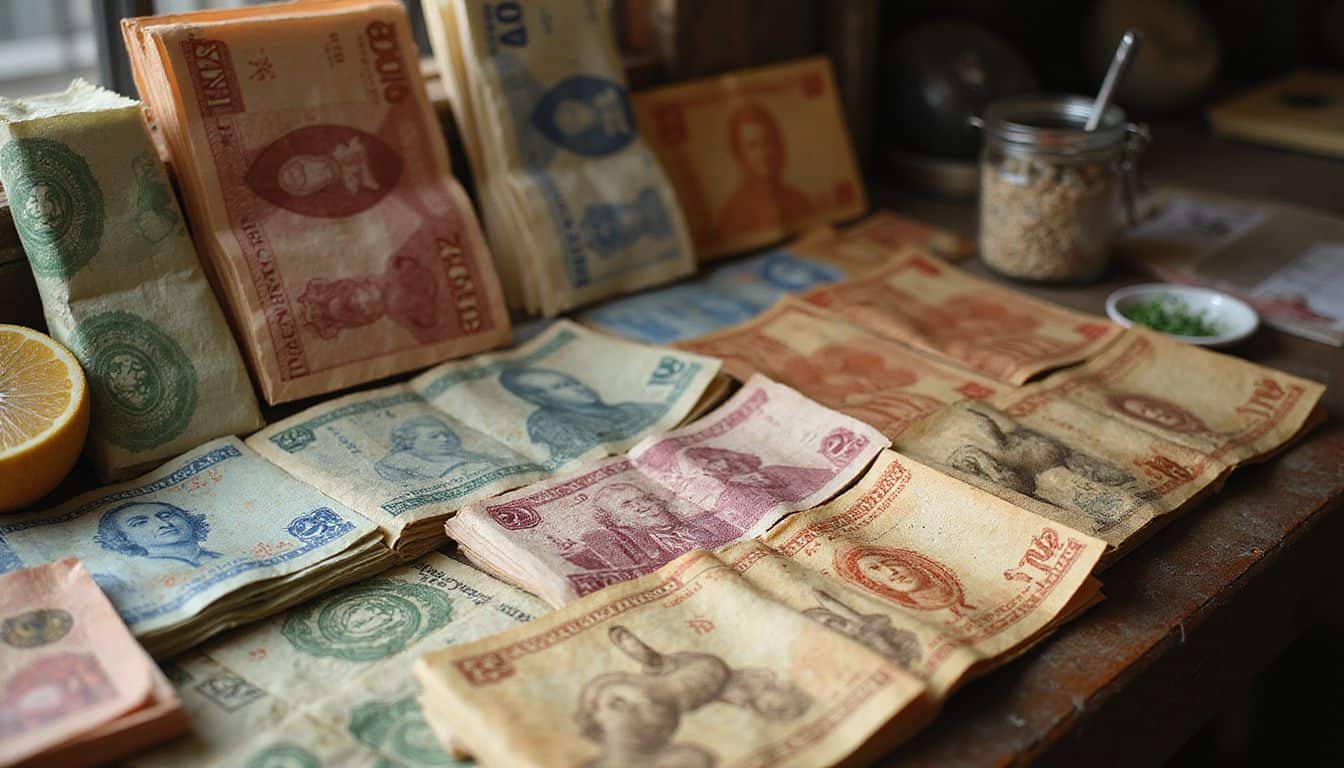
Writers have great freedom to come up with fantasy currencies, letting their imagination run wild. These creative money types add depth and fun to stories, pulling readers into vivid cultures and lands.
Credits
Credits often appear in science fiction as futuristic money. They tend to be digital, not coins or bills you hold. Popular shows, movies, and games love credits due to their simplicity—think of currency like Galactic Credits in “Star Wars,” Federation Credits from “Star Trek,” or the common credits found across planets in “Mass Effect” games.
Doctor Who features them too, along with the sci-fi classic “Total Recall” and Isaac Asimov’s famed book series called “Foundation.” Yet fans know using credits can feel overused—a classic trope geeks spot quickly when enjoying new stories set among spaceships and starfrontiers.
Names Adapted from Real-World Currencies
Some fictional currencies borrow directly from real money, which lends familiarity to fantasy worlds. The “Ankh-Morpork dollars and pence” in Terry Pratchett’s Discworld series mirrors British pounds, pennies, and shillings.
Another example is the “Amero,” a made-up currency linked with rumors of a North American Union merging Canadian dollars, Mexican pesos, and U.S. dollars into one monetary unit.
Fantasy coins often echo what we know well: our daily cash.
Novel Names
Novel currency names add flavor and depth to your fictional economy. Take the Flanian Pobble Beads from “The Hitchhiker’s Guide to the Galaxy,” for example; they sound quirky yet believable, fitting Douglas Adams’ playful humor.
Games like “Destiny” feature futuristic currencies with exotic titles such as Glimmer—programmable matter players use to buy gear or upgrades. Other stories even trade in Souls, turning spiritual essence into a literal medium of exchange, while Terry Pratchett’s novel “Strata,” uses units called Days—a clever form of time-based money that highlights life’s value.
Creative naming helps set mood, hint at culture, and let readers know they’re somewhere extraordinary. Unique currency names can hint back to ancient mythologies (like Noldorin coins found among Tolkien’s elves), natural wonders (such as crystals favored by Lizardmen kingdoms), or subtle nods toward real-world history—as seen with Roman denarii inspiring fantasy coins’ weights and values.
With endless options available through mythologies and cultures worldwide, authors can craft fun and engaging economic systems within their imagined lands.
Exploring these new naming ideas naturally leads us next toward barter systems—simple yet powerful methods of trading goods without traditional coins or tokens.
Barter Systems
While novel names can make your currency feel fresh, barter systems offer a simpler and more direct option. In barter trade, goods like food and minerals become the media of exchange instead of coins or digital tokens.
Cultural values shape these trades: Dothraki might value horses highly for barter while people from Arrakis prize the spice melange as payment.
Barter also gives a personal touch to your story’s economy. I’ve seen in tabletop games that wood elves prefer herbs and rare plants over shiny metals. Similarly, Watto on Tatooine traded spaceship parts directly for goods instead of using common currency like Galactic Credits.
Exchange Media for Fictional Currencies
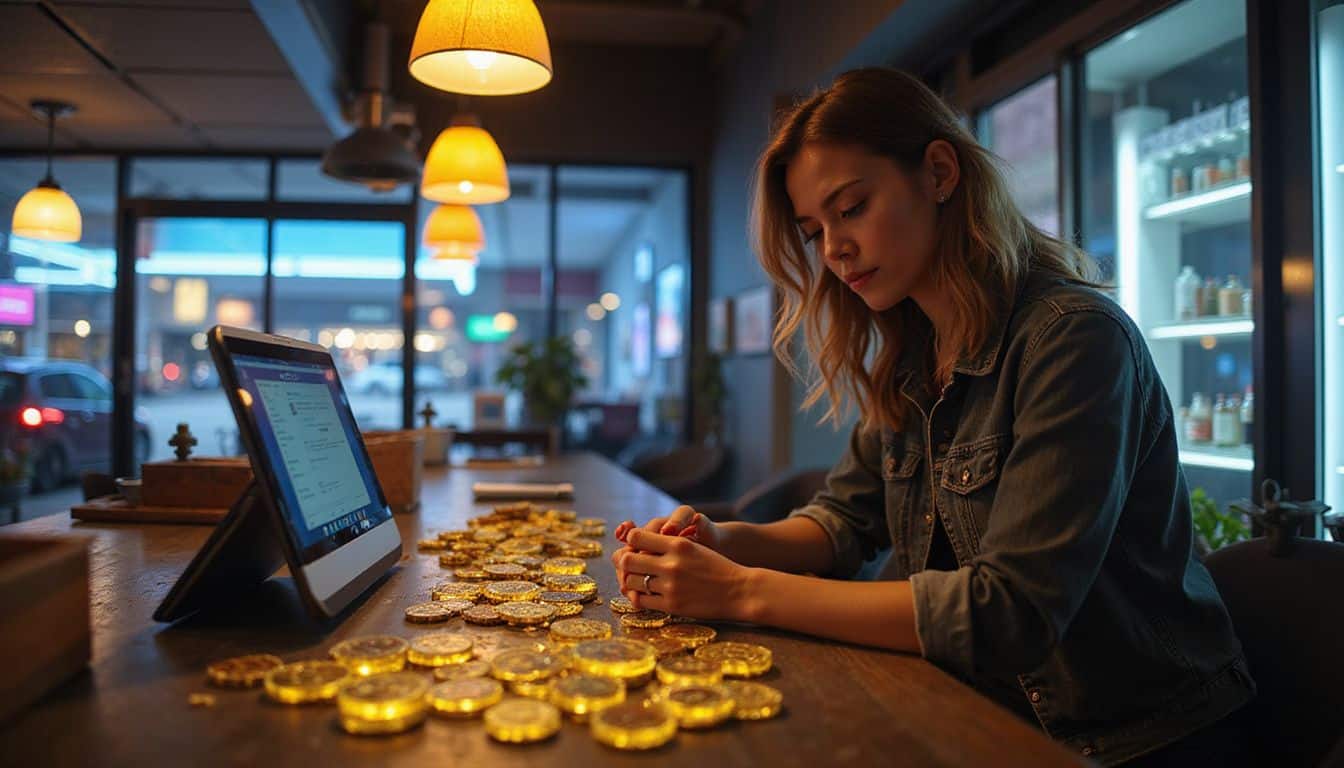
Your fictional money can exist as unique physical items or even magical objects. Or keep it modern, and pick forms like virtual coins stored in digital wallets—like “credits” you see in sci-fi games.
Physical Coins
Physical coins form the backbone of currency in fantasy worlds like the Agatean Empire or Meereen from Game of Thrones. Metal coins such as platinum sovereigns, golden dragons, and copper pennies are common due to their durability and ease of carrying.
Different sizes, shapes, symbols, or engravings often appear—like those minted by High Elves or Dark Elves—to help merchants easily identify their worth.
Coins made from precious metals also fit well into magical stories since Allomancers in Mistborn can burn metals for power. The presence of bronze sterlings, silver denars, gold guilders—or even mythic materials like Noldoli-forged pieces—can lend depth to your fictional economy.
With physical coins already covered digitally created money is another exciting area worth exploring next.
Digital Tokens
Digital tokens appear often in dystopian stories, reflecting today’s shift to online currencies and cryptocurrencies. These digital units might store value in surprising forms—like energy credits powering Earth Federation colonies, genetic data prized by the Bene Gesserit from Dune, or even rare alien tech sought after by Krombopulos Michael types across galaxies.
Some creators add humor, similar to meme coins, naming tokens after pop culture favorites like Pizza the Hutt’s “Spaceballs.” In science fiction worlds such as Universal Century Gundam or Shin Megami Tensei games, these currencies shape trade markets and human survival.
Precious Materials
Precious materials are common as fantasy currency, traded both raw and refined. For example, Gold Crowns in Warhammer hold real value due to their pure gold content; adventurers often trade copper coins or sous made from lesser metals for these prized pieces.
Another well-known case is Spice Melange from Dune, a precious resource essential to truth-sayers, mentats, and spacing guild navigators—granting mental boosts and space travel abilities rather than just wealth.
He who controls the spice controls the universe. — Frank Herbert, *Dune*
Alongside precious resources like energy in Arthur C. Clarke’s timelines or water on Arrakis in Dune, fantasy worlds also use powerful magical items as valuable mediums of exchange.
Magical Artifacts
Magic artifacts make great fantasy money. Take Faerie Gold, for example—they look like real gold coins at night but turn back into yellow leaves by dawn. Crystallized magic, used by elves, is another neat idea: it can buy goods and also power strong spells.
“Sequin trees” from “The Dirdir” have rare crystals that serve as currency too. Such items give your fantasy world a fresh take beyond basic coinage like dollars or euros, making the economy more varied and exciting to geeks who love magical twists in their stories.
Fictional Currencies in Literature
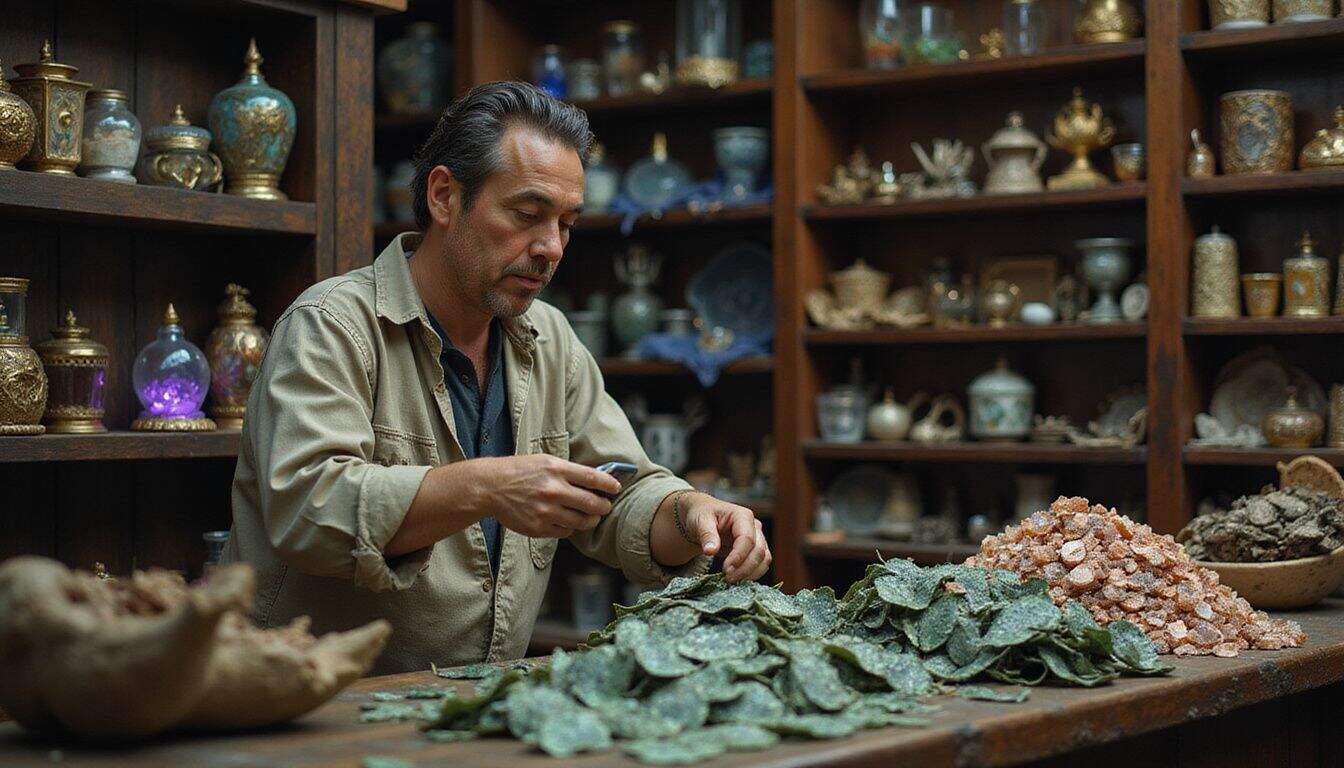
Fantasy books and science fiction stories often use creative money systems—some backed by gold, others traded with magical artifacts—to build remarkable worlds; read on for some cool examples.
Examples from Fantasy Novels
Galleons, Sickles, and Knuts come to mind from the Harry Potter series. Wizards use these coins every day, with 1 Galleon equaling 17 Sickles or exactly 493 Knuts. George R.R. Martin uses gold dragons, silver stags, and copper pennies as real coins people spend in places like Volantis, Qarth, and Braavos.
Money buys a man’s silence for a time; but it will never buy his honor. — Glen Cook
Patrick Rothfuss adds depth in The Kingkiller Chronicle by using marks, talents, and jots as currency. Brandon Sanderson gives us spheres made of gems infused with magic—the money system used throughout The Stormlight Archive novels set within the Cosmere—split into chips (small bits), marks (mid-size), and broams (largest).
Examples from Science Fiction Novels
Science fiction authors often create cool and memorable currencies that geeks love. Altairian dollars from “The Hitchhiker’s Guide to the Galaxy” are a fun example—used widely across space, they add humor and fantasy to the story’s economy.
“Star Trek” fans know Gold-Pressed Latinum well; because standard replicators can’t copy it, this shiny currency stays rare and valuable.
Another neat idea comes from H.G. Wells’ novel “The Shape of Things to Come,” where Air Dollars drive a future world built around air travel rather than land borders or nations. Cyberpunk tales like Richard Morgan’s book “Broken Angels” trade in hard currency, meaning real goods matter more than digital stuff alone.
These made-up currencies help build rich worlds readers want to explore again and again.
Fictional Currencies in Movies and TV Shows
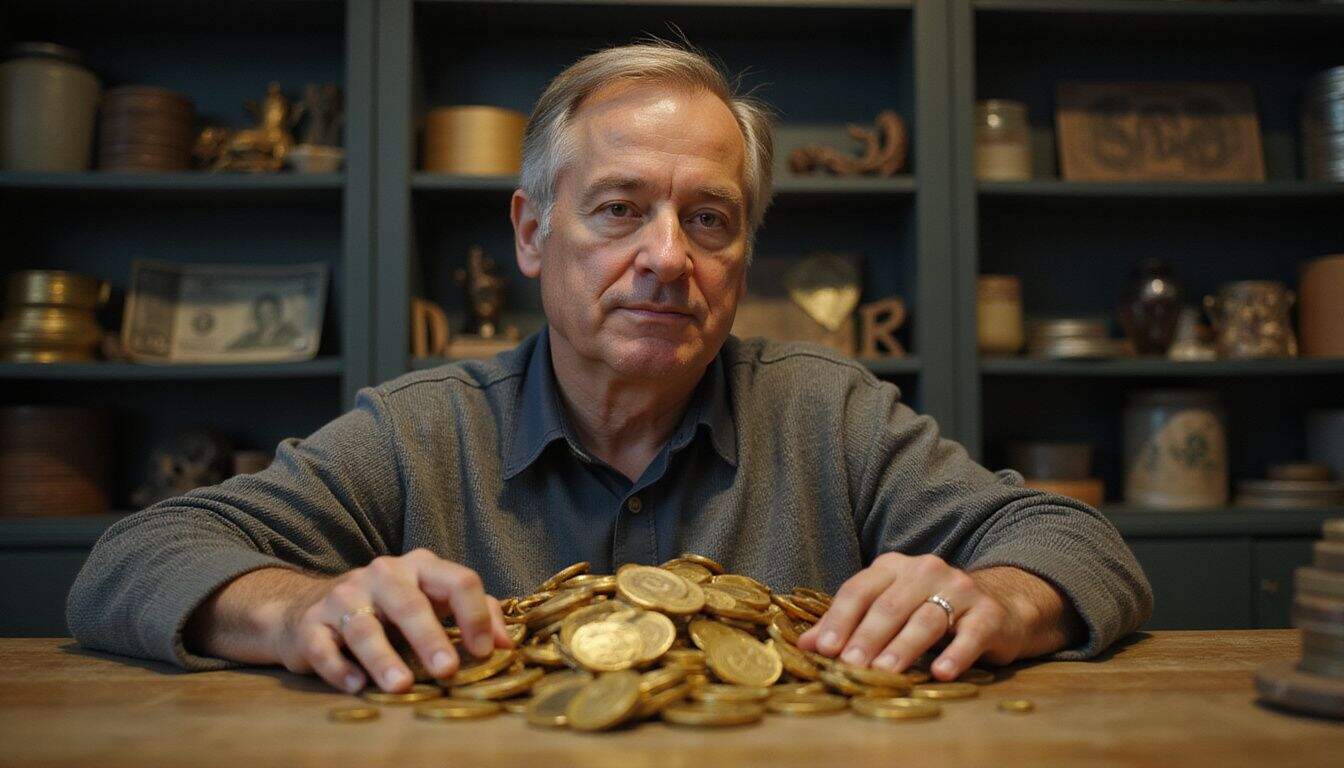
Movies and TV shows often create unique currencies—like the Republic Dataries from “The Phantom Menace” or Cubits from Glen A. Larson’s “Twelve Colonies”—adding depth to their fictional worlds; read on for more creative examples!
Iconic Currencies in Sci-Fi Films
Sci-fi films often feature iconic fictional currencies, which geeks love to discuss and imagine using. In “In Time” from 2011, currency is time itself—life minutes ticking away with each purchase, adding thrilling stakes to every transaction.
Fans of classic sci-fi may recall cubits from Glen A. Larson’s “Battlestar Galactica,” shifting over the series from simple gold coins into common gambling tokens used among the Twelve Colonies survivors.
Ferengi traders in Star Trek prefer Latinum—a valuable liquid metal stored within slips or bars—to standard forms like US dollars or Brazilian real money; Quark gladly handles this unique legal tender at his bar in Deep Space Nine episodes such as “Who Mourns for Morn?”.
Another humorous example is Spacebucks—the silly yet memorable cash featured in Mel Brooks’ parody film “Spaceballs”. Beyond these famous picks, one obscure but entertaining currency appears briefly in A Boy And His Dog: canned food as a barter item after society collapses into chaos!
Fantasy-Based Currencies in TV Shows
Fantasy TV shows often use creative currencies to build a believable setting. Take “Odd Squad,” where kid agents trade Jackalope Dollars, giving a funny twist to money. In the Star Trek universe, Bajorans use Lita as their official currency, while another episode introduces Quatloos—coins used by strange beings called the Providers in “The Gamesters of Triskelion.” Likewise, Avatar: The Last Airbender has distinct money for different nations like the Earth Kingdom and Fire Nation, making each culture feel real through unique coins and symbols similar to our yen symbol (¥) or penny.
These made-up funds don’t just entertain; they help make fantasy worlds richer and more alive to viewers.
Fictional Currencies in Video Games
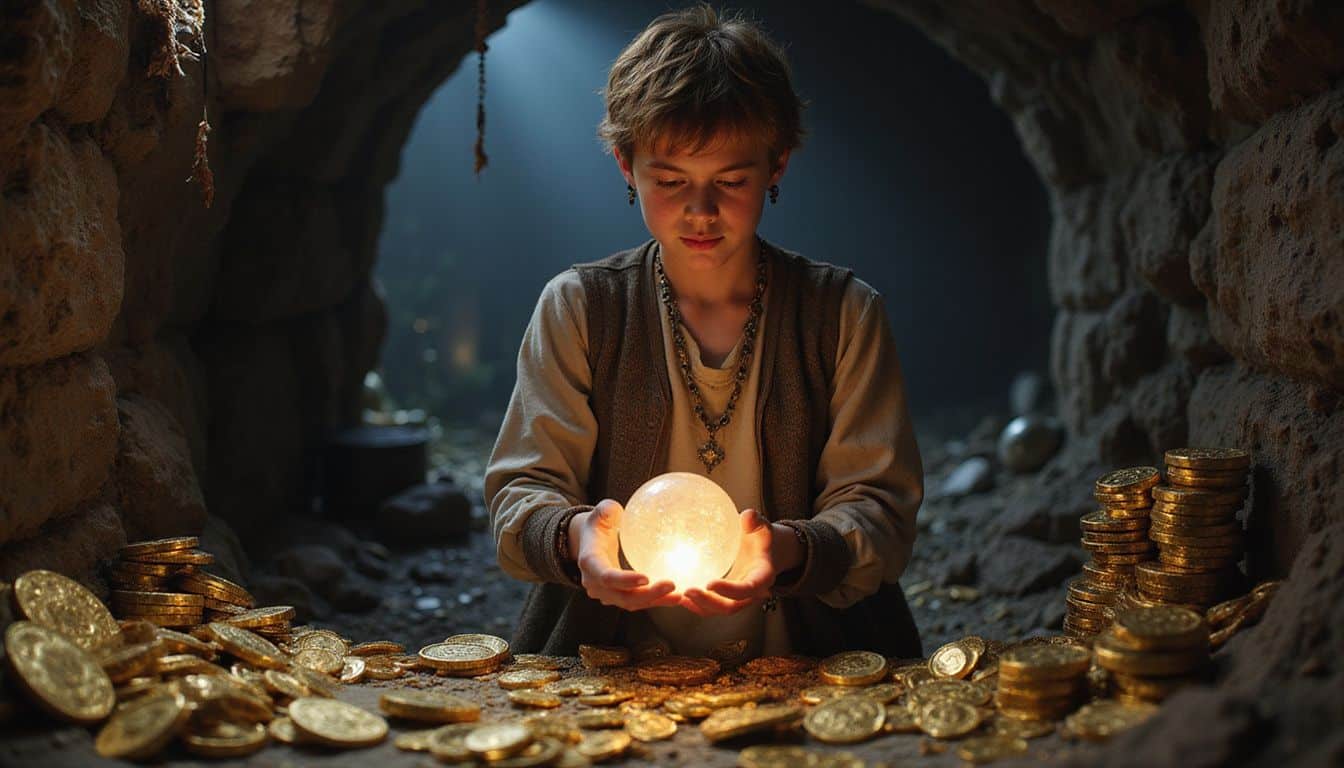
Video games often feature creative currencies—digital tokens, enchanted coins, or glowing treasures—that shape how players interact and trade in-game resources; read on to explore some fun examples.
MMORPGs and Digital Economies
MMORPGs often create digital economies built around unique fictional currencies. In games like Halo and EVE Online, credits form the main money players use to trade weapons, armor, and other goods.
Meseta in Phantasy Star lets players buy items to strengthen their characters for battle missions. Zeni from Dragon Ball and Capcom titles acts as currency for upgrades or gear purchases within these online markets.
Even Poké Dollars from Pokémon are key parts of digital marketplaces where users buy potions or capture gear.
Gamers can spend hours gathering resources or trading rare virtual items worth huge amounts of fictional cash such as réals from Fractured Fairy Tales online worlds or truthsayers coins inspired by Ursula K.
Le Guin stories. Digital tokens may not exist outside the game world but have real impacts on player behavior inside it; some gamers even craft elaborate costumes based on popular MMORPG series like World of Warcraft cosplay.
As creators make single-player experiences more engaging, they introduce fresh ideas for fictional game currencies too.
Single-Player Games with Unique Currencies
Moving away from online multiplayer realms, single-player games also offer creative and quirky currencies. Animal Crossing uses Bells as a charming currency to buy furniture or settle your home loan with Tom Nook.
The Fallout series takes creativity further by making Bottle Caps valuable after society’s fall—it adds a funny twist to commerce for survivors in the wasteland.
In The Legend of Zelda, players collect Rupees—colorful gems you earn by cutting grass or smashing pots—to purchase helpful items or upgrade gear. Classic role-playing titles like Final Fantasy use standard gold coins (GP) to trade goods and services on epic journeys full of magic battles, similar to table-top Dungeons & Dragons sessions at home with friends in Dumbledore’s Army style adventures.
Games like Disgaea and Odin Sphere each put their spin on fictional money too, helping geeks enter cool fantasy worlds through simple yet smart economic systems.
Famous Examples of Fictional Currencies

Dragos, Simoleons, Zenny—these fantastic currencies brought life to beloved games and stories, but there are even more fun examples worth exploring.
Dragos
Fans of the game “Star Frontiers” know Dragos well. This fictional currency adds spice to sci-fi trade and adventure plots, giving players a fun way to manage money without using common units like cents or the American dollar.
In some tales, heroes earn Dragos by fighting alien foes from Zeon or trading items found in far-off planets; others simply gamble them away in space cantinas after tough missions.
A clever currency like Dragos makes a game’s economy feel alive and unique. It’s different enough from standard terms such as thaler or livre that it immediately draws your attention—but it’s simple enough for new fans to quickly grasp how it’s spent in their quests across galaxies and markets alike.
Units
While Dragos suit fantasy worlds, Units often belong in science fiction settings. Geeks spot “Units” as basic money forms across space-exploring tales—simple electronic credits used galaxy-wide.
Popular games like “A Hat in Time” use similar forms of digital exchange to buy gear or tools easily, without detailed value charts. Even TV series with fun quirks—think Irken currency from Invader Zim—show simple Unit systems for paying and trading among alien folk.
Simoleons
Unlike Units from sci-fi worlds, Simoleons come straight out of a cartoon economy. Featured in the 1988 classic movie “Who Framed Roger Rabbit,” Simoleons are silly and playful coins that match Toontown’s wacky style.
The name itself is a clever twist on “simoleons,” an old-time slang term for dollars, adding humor to Toon transactions. This whimsical fictional currency helps reinforce the lively spirit behind adventures like those found in games such as “Rhapsody: A Musical Adventure.
Zenny
Jumping from Simoleons’ playful world into Zenny is an easy switch for gamers. Zenny, derived from “Zeni,” serves as the go-to fictional currency in Mega Man games, earned by defeating enemies and finishing levels.
My first run through these levels showed me how crucial Zenny was to progress.
Players spend their hard-earned Zenny on items and upgrades that boost strength or defense stats. Unlike Calormen crescents or Melniboné coins inspired by mythical worlds, this futuristic digital money fits perfectly with Mega Man’s sci-fi themes.
Collect enough of it through battles, and you’ll soon have a character strong enough to defeat any Drago or Breen warrior who crosses your path.
How Fictional Currencies Reflect Real-World Economies

Fictional currencies often mirror real-life money systems, showing how markets and trading shape society. They also highlight how digital tokens can change the way we see value and ownership today.
Parallels with Traditional Money
Fantasy currencies often mirror real-world money systems to feel believable and immersive. Dollars, euros, yen—these are the coins and bills we use every day. Likewise, fictional worlds can have gold Galleons as in Harry Potter or silver Stags from Game of Thrones.
Such fantasy currency might include banks for storing wealth and traders who convert cash.
Prices shift based on supply or demand just like in our economy. Inflation can make a loaf of bread pricey even in magical towns if too much gold flows around town squares. Paying taxes to kings or fees to merchants adds more realism to your world-building efforts.
Borrowing familiar patterns helps readers easily grasp fantasy economics without getting lost along the way.
Influence of Cryptocurrencies
Traditional money mirrors real-world economies, but cryptocurrencies leap beyond old limits. Bitcoin appeared in 2009 and shook things up as a minor currency. It challenged how people see money by making it digital and free from government control.
Cryptocurrencies push past borders—no country controls them—and show the weakening ties of cash-to-country.
Just like fictional currencies in stories, crypto coins live only online yet impact the real economy every day. Geeks all over explore new ideas through Ethereum smart contracts or memes powered by Dogecoin that turned into cash overnight.
Even turning these virtual funds physical is easy: just convert crypto to cash whenever you choose!
Naming Ideas for Fictional Currencies
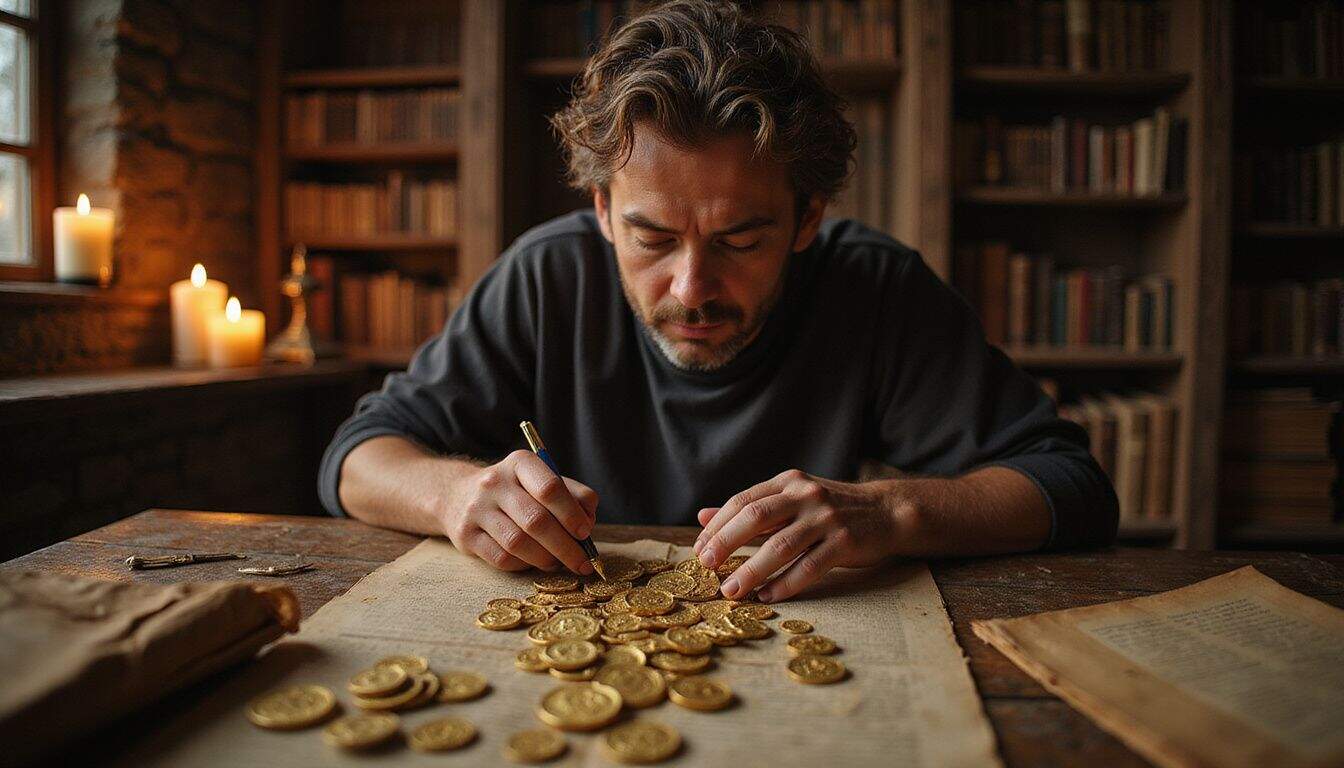
Fantasy languages and ancient history can inspire catchy currency names, adding depth to your story’s economy. Use nature terms or mythic symbols for coins readers will remember.
Derived from Historical Terms
Drawing fictional currency names from historical money brings depth to your world. For example, using terms like “florin” or “ducat,” coins common in medieval Europe, provides a sense of realism and history that readers instantly connect with.
In my own experience writing fantasy stories, choosing familiar yet slightly altered forms such as “silvra” instead of silver helped build authenticity without risking cultural misrepresentation.
Picking currency names from ancient cultures can add meaning to your story’s economy. Roman-era coins like denarius or sestertius offer strong inspiration for fiction writers aiming for accuracy while keeping things simple enough for audiences to grasp intuitively.
Avoid overly detailed explanations; trust that even subtle adaptations—like turning drachma into “drakma”—will clearly show value within your narrative context naturally and quickly.
Inspired by Natural Resources
In fantasy stories, currencies based on natural resources give a sense of realism and depth. Gold coins are common, but why not think beyond metals? Imagine societies paying with carved amber stones or polished seashells from distant beaches.
Towns in dense forests might trade leaf-shaped jade tokens, while desert tribes could value cubes of salt or colored glass beads that catch the sun’s sparkle.
Natural resource-based currencies offer readers instant clues about cultures and their surroundings. People living near rare minerals may use bright crystals for money; islanders surrounded by coral reefs might exchange dried coral pieces as payment.
These choices allow writers to show culture clearly through everyday trades and market scenes. Utilizing such materials provides clever storytelling hints before moving onto Mythological References as currency names.
Mythological References
While natural resources offer easy currency names, myths open a whole new door. Cultures from ancient Greece, Egypt, or Norse legends have many ideas ripe for use in fictional currencies.
For example, you could name your story money “Zeniths,” hinting at powerful Greek gods high on Mount Olympus. Or choose something like “Zulacks” that feels magical and mysterious to set the mood of your fantasy world.
Myth-based names add depth and spark readers’ imaginations with familiar yet exciting connections.
Benefits of Using Fictional Currencies in Storytelling

Fictional currencies let you shape unique digital economies, build immersive worlds—and add depth to your storytelling; read on to learn how these coins and credits boost the fun for readers and gamers alike.
World-Building Opportunities
Creating unique currencies builds authenticity into your story’s setting. Well-crafted currency systems convey culture, history and values of fictional worlds clearly. Rich storytelling often includes novel coins such as Harry Potter’s Galleons or The Witcher video game’s Orens to make the readers feel immersed in a believable economy.
Special naming conventions can reflect historical events, powerful rulers or valuable natural resources within your setting to boost credibility even more effectively. Thinking about how characters earn, spend and store wealth through artifacts like enchanted gems or rare metals helps shape exciting stories tied directly into daily life and local customs.
Now let’s examine another important factor—creating unique economies!
Creating Unique Economies
Unique economies help set fictional worlds apart. Custom currencies let you show each culture’s values and traditions in a simple way. A society that uses magical artifacts as money may value mysticism above wealth, while one trading rare gems could prize beauty highly.
Such systems offer narrative depth and reflect cultural identities clearly through exchange methods. A well-crafted economy can shape storylines around trade conflicts or power struggles, boosting engagement with readers who enjoy detailed world-building elements like those seen in popular MMORPGs such as World of Warcraft or single-player hits like Skyrim.
Challenges in Designing Fictional Currencies

Creating fictional currencies can get tricky fast—from keeping the rules clear to making trade feel balanced—but we’ve got tips for you, so keep reading!
Ensuring Consistency
Geeks pay close attention to fictional details, so consistency in your currency system really matters. If characters pay three Dragos for a loaf of bread in one scene, it shouldn’t jump to ten Dragos later without reason.
Stick to clear naming conventions as well—calling coins “Zennies” today and switching to “Simoleons” tomorrow can confuse readers and ruin immersion. Keeping track with simple tools like spreadsheets or world-building apps ensures all exchanges add up logically throughout your story’s economy.
Balancing Economic Systems
Fantasy worlds depend heavily on balanced economic systems to make stories believable. Authors must match the supply of fictional currency, such as digital tokens or magical items, with demand.
Too few precious resources may stall trade and frustrate characters; too many can lead to wild inflation or unrealistic wealth gaps in your setting. Integrating blockchain technology or cryptocurrency concepts into storytelling could provide neat solutions for stability—like transparent transactions—to maintain healthy economies.
Writers should also consider how fictional money compares to real-world economics, reflecting familiar issues like scarcity, trust in value, and fair exchange to ground readers comfortably within the fantasy economy.
How Will Fictional Currencies Evolve in 2025?

Fictional currencies in 2025 may become even more creative and diverse across various media. Writers and game developers will choose currency names with care, mindful of cultural respect and rich world-building potential.
Unique currency systems could use energy units, rare minerals, or magical artifacts to reflect the ideas and values of societies they represent. Digital tokens might show influence from real-world cryptocurrencies like Bitcoin or Ethereum, shaping plots through their use by characters.
As these imagined currencies grow more varied, stories will comment subtly on real economic issues people face today.
People Also Ask
What is fictional currency in fantasy stories?
Fictional currency is imaginary money authors create for their fantasy worlds. It helps build a believable setting, adds depth to the story, and shapes how characters trade goods or services.
Why should I use unique types of fictional currency in my writing?
Using creative forms of fictional currency makes your world feel real and interesting. It can show cultural values, social ranks, or even magical elements—helping readers connect better with your story.
Can you give examples of different fantasy currencies I could include?
Sure! You might use enchanted gems that glow when traded honestly, rare feathers from mythical birds as valuable coins, or ancient scrolls holding secret spells as payment methods.
How do I choose the right type of fictional money for my story?
Think about your world’s culture and what people value most there: magic power, honor among warriors, knowledge from elders? Pick a form of currency matching these ideas clearly to strengthen reader engagement and enhance storytelling clarity.
References
https://allwritealright.com/tips-for-creating-a-fictional-currency/
https://nerdarchy.com/worldbuilding-fantasy-currency/
https://list.fandom.com/wiki/List_of_fictional_currencies
https://concord.fandom.com/wiki/List_of_Fictional_Currencies
http://bitcoinwiki.org/wiki/list-of-fictional-currencies
https://mythcreants.com/blog/questions/what-should-i-consider-while-creating-a-fictional-economy/
http://magicwriter.co.uk/worldbuilding-currency/
https://mackenziekincaid.com/writing/worldbuilding-money/ (2018-08-20)
https://happy-writer.com/sickles-and-sixpence-writing-currency-in-your-fantasy-novel/
https://www.titlemax.com/discovery-center/20-fictional-dystopian-currencies-what-they-buy/
https://absolutewrite.com/forums/index.php?threads/creating-fantasy-currency.161552/
https://discover.hubpages.com/literature/Magical-Items-List
https://www.watchmojo.com/articles/top-10-fictional-currencies-in-film-and-tv
https://www.thegamer.com/best-fictional-currency-money-coins-in-video-games/
https://screenrant.com/video-games-best-fictional-currencies/ (2022-01-15)
https://journals.sagepub.com/doi/full/10.1177/14705931221137733
https://medium.com/adjacent-possible/the-economics-of-science-fiction-c8a3b7fd21a5
